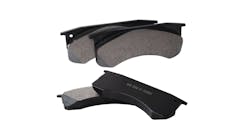Let’s talk control. As a fleet maintenance manager, the more control you have over your vehicles and the technology on board – the better.
The same is true about idle reduction technology. Even the most cutting edge equipment is only as effective as the person using it.
If you have options and settings that allow your systems to work for you, your maintenance costs can be greatly reduced.
Let’s look at a few options that can help you control your idle reduction technology and make it more effective.
Programmability
If you can program your device to start on specific days at specific times, it takes a lot of user error out of the equation.
Let’s say your drivers have to arrive an hour early to start their vehicles so they are “warmed-up” before they can begin their work day. Whether the thermometer reads 5°F or 95°F outside, that’s a lot of wasted time – and money.
Even if the vehicles have idle reduction technology that will warm the vehicles up without the engine on, if the technology needs to be manually activated there’s room for improvement.
With a programmable timer you can set the start times for every day of the week. In some cases, up to four times per day.
If you are using an advanced timer, you can even program the length of time the device is active. The smaller the increments, the better.
If you can customize your device in 10-minute increments that gives you immense control over your fleet and the climate in which you operate.
Language Options
Drivers come from all walks of life. If they can operate technology in their native language, they are more likely to use it.
Look for devices that have language options, like Spanish and French, to make your system more effective.
Low Voltage Disconnect
A low voltage disconnect feature is standard on most devices. A device with advanced settings will allow you to adjust the level at which you want that device to deactivate so it does not drain your battery.
Since fleets and vehicle needs vary, the greater the flexibility with these settings the better. You may want to set the disconnect voltage as low as 11.0V or as high as 25.5V, depending on whether you are running a 12V or 24V system.
Hour Meter
An hour meter is crucial to tracking the use of your devices. It will tell you how your drivers are using the technology, as well as let you know when it’s time to perform routine maintenance on the product.
It will also help you know how much warranty is left on the product.
Preventative Maintenance Reminders
It is no secret that preventative maintenance keeps idle reduction technology running efficiently.
Running the system at least once a month, changing the fuel filter and checking the electrical connections are all steps that can be taken to make sure your device is saving you fuel and reducing maintenance costs. Advanced devices, like the Webasto SmarTemp Control, can alert you when preventative maintenance is due.
A 20 minute check-up once a month can keep you ahead of the game so your idle reduction technology and vehicles are running efficiently for years to come.
Save Money
Whatever your maintenance or idle reduction strategy is, if you can program your technology to optimize your fleet, you can save more money.
Smart fleets have been able to save hundreds of thousands of dollars per year, plus extend the life of their equipment by putting technology to work for them.


